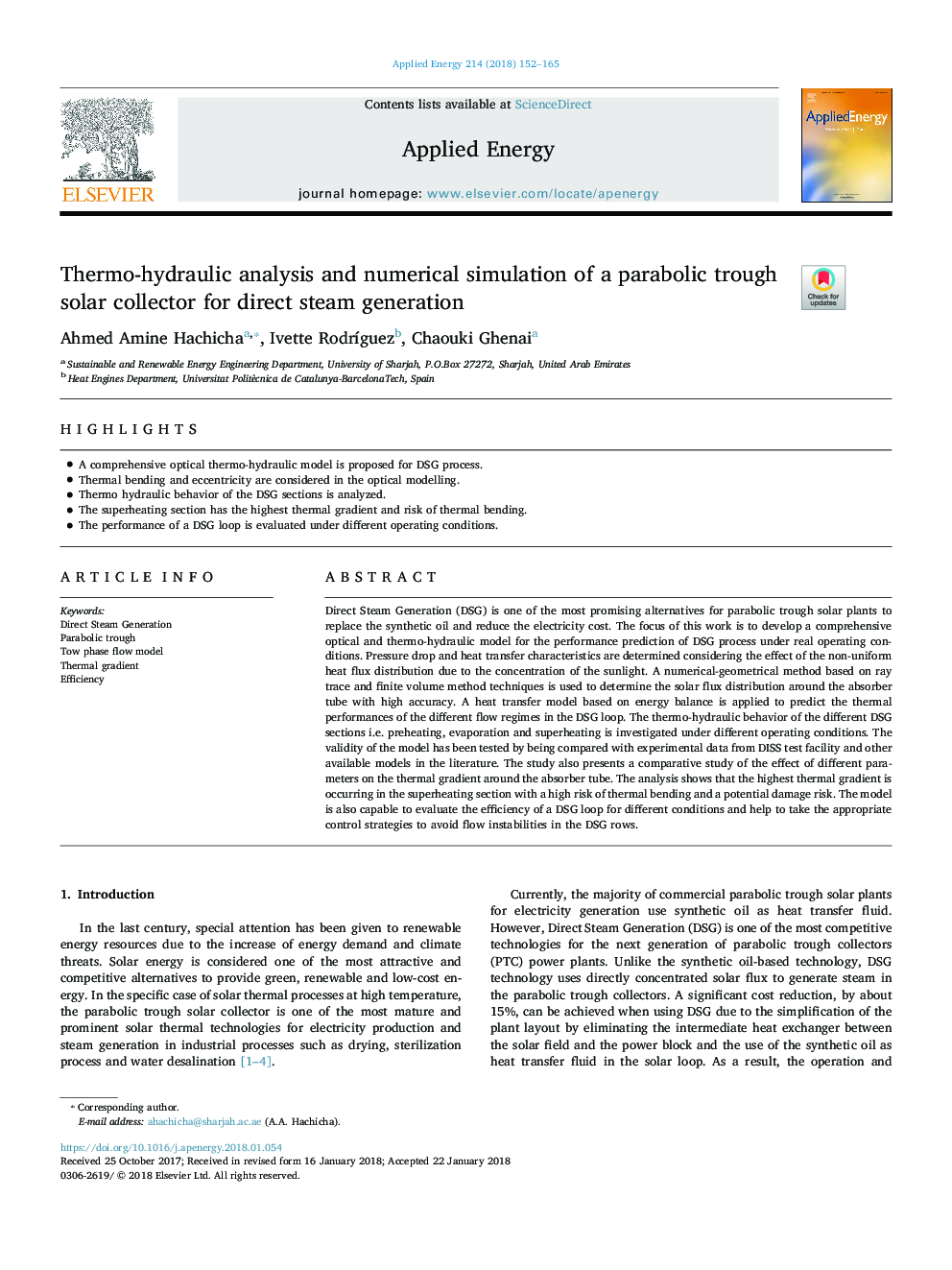| Article ID | Journal | Published Year | Pages | File Type |
|---|---|---|---|---|
| 6680732 | Applied Energy | 2018 | 14 Pages |
Abstract
Direct Steam Generation (DSG) is one of the most promising alternatives for parabolic trough solar plants to replace the synthetic oil and reduce the electricity cost. The focus of this work is to develop a comprehensive optical and thermo-hydraulic model for the performance prediction of DSG process under real operating conditions. Pressure drop and heat transfer characteristics are determined considering the effect of the non-uniform heat flux distribution due to the concentration of the sunlight. A numerical-geometrical method based on ray trace and finite volume method techniques is used to determine the solar flux distribution around the absorber tube with high accuracy. A heat transfer model based on energy balance is applied to predict the thermal performances of the different flow regimes in the DSG loop. The thermo-hydraulic behavior of the different DSG sections i.e. preheating, evaporation and superheating is investigated under different operating conditions. The validity of the model has been tested by being compared with experimental data from DISS test facility and other available models in the literature. The study also presents a comparative study of the effect of different parameters on the thermal gradient around the absorber tube. The analysis shows that the highest thermal gradient is occurring in the superheating section with a high risk of thermal bending and a potential damage risk. The model is also capable to evaluate the efficiency of a DSG loop for different conditions and help to take the appropriate control strategies to avoid flow instabilities in the DSG rows.
Related Topics
Physical Sciences and Engineering
Energy
Energy Engineering and Power Technology
Authors
Ahmed Amine Hachicha, Ivette RodrÃguez, Chaouki Ghenai,
